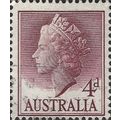Animal - Leopard - Marwell Zoo - postcard c.1980s
- Condition : Used
- Dispatch : 2 Days
- Brand : None
- ID# : 128323308
- Quantity : 1 item
- Views : 348
- Location : United Kingdom

- Seller : justthebook (+1704)
- Barcode : None
- Start : Mon 19 May 2014 15:16:12 (EDT)
- Close : Run Until Sold
- Remain : Run Until Sold
Checks/Cheques
 for 1 item(s) edit
for 1 item(s) edit
Shipping Calculator
More Listings from This Seller view all
Seller's Description
- Postcard
- Picture / Image: 'One of the Leopards at Marwell Zoological Park near Winchester, Hampshire'
- Publisher: Beric Tempest, c.1980s
- Postally used: no
- Stamp: n/a
- Postmark(s): n/a
- Sent to: n/a
- Notes / condition:
Please ask if you need any other information and I will do the best I can to answer.
Image may be low res for illustrative purposes - if you need a higher definition image then please contact me and I may be able to send one.
------------------------------------------------
Postage & Packing:
UK (incl. IOM, CI & BFPO): 99p
Europe: £1.60
Rest of world (inc. USA etc): £2.75
No additional charges for more than one postcard. You can buy as many postcards from me as you like and you will just pay the fee above once. (If buying postcards with other things such as books, please contact or wait for invoice before paying).
Payment Methods:
UK - PayPal, Cheque (from UK bank) or postal order
Outside UK: PayPal ONLY (unless otherwise stated) please. NO non-UK currency checks or money orders (sorry).
NOTE: All postcards are sent in brand new stiffened envelopes which I have bought for the task. These are specially made to protect postcards and you may be able to re-use them. In addition there are other costs to sending so the above charge is not just for the stamp!
I will give a full refund if you are not fully satisfied with the postcard.
----------------------------------------------
Text from the free encyclopedia WIKIPEDIA may appear below to give a little background information (internal links may not work) :
*************
The leopard (Panthera pardus) is a member of the Felidae family with a wide range in some parts of Africa and tropical Asia, from Siberia, South and West Asia to across most of sub-Saharan Africa. It is listed as Near Threatened on the IUCN Red List because it is declining in large parts of its range due to habitat loss and fragmentation, and hunting for trade and pest control. It is regionally extinct in Hong Kong, Singapore, Kuwait, Syrian Arab Republic, Libya and Tunisia.[1]
The leopard /'l?p?rd/ is the smallest of the four ""big cats"" in the genus Panthera. Compared to other members of the Felidae, the leopard has relatively short legs and a long body with a large skull. It is similar in appearance to the jaguar, but is smaller and more slightly built. Its fur is marked with rosettes similar to those of the jaguar, but the leopard's rosettes are smaller and more densely packed, and do not usually have central spots as the jaguars do. Both leopards and jaguars that are melanistic are known as black panthers.
The species' success in the wild is in part due to its opportunistic hunting behavior, its adaptability to habitats, its ability to run at speeds approaching 58 kilometres per hour (36 mph), its unequaled ability to climb trees even when carrying a heavy carcass,[2] and its notorious ability for stealth. The leopard consumes virtually any animal that it can hunt down and catch. Its habitat ranges from rainforest to desert terrains.
Leopards show a great diversity in coat color and rosettes patterns. In general, the coat color varies from pale yellow to deep gold or tawny, and is patterned with black rosettes. The head, lower limbs and belly are spotted with solid black. Coat color and patterning are broadly associated with habitat type. Their rosettes are circular in East Africa but tend to be squarer in southern Africa and larger in Asian populations. Their yellow coat tends to be more pale and cream colored in desert populations, more gray in colder climates, and of a darker golden hue in rainforest habitats. Overall, the fur under the belly tends to be lighter coloured and of a softer, downy type. Solid black spots in place of open rosettes are generally seen along the face, limbs and underbelly.[3]
Leopards are agile and stealthy predators. Although they are smaller than other members of the Panthera genus, they are able to take large prey due to their massive skulls that facilitate powerful jaw muscles. Head and body length is usually between 90 and 165 cm (35 and 65 in). The tail reaches 60 to 110 cm (24 to 43 in) long, around the same length as the tiger's tail and relatively the longest tail in the Panthera genus (though snow leopards and the much smaller marbled cats are relatively longer tailed).[4][5] Shoulder height is from 45 to 80 cm (18 to 31 in). The muscles attached to the scapula are exceptionally strong, which enhance their ability to climb trees. They are very diverse in size. Males are about 30% larger than females, weighing 30 to 91 kg (66 to 200 lb) compared to 23 to 60 kg (51 to 130 lb) for females. Large males of up to 91 kg (200 lb) have been documented in Kruger National Park in South Africa; however, males in South Africa's coastal mountains average 31 kg (68 lb) and the females from the desert-edge in Somalia average 23 to 27 kg (51 to 60 lb). This wide variation in size is thought to result from the quality and availability of prey found in each habitat. The most diminutive leopard subspecies overall is the Arabian leopard (P. p. nimr), from deserts of the Middle East, with adult females of this race weighing as little as 17 kg (37 lb).[6]
Other large subspecies, in which males weigh up to 91 kg (200 lb), are the Sri Lankan leopard (P. p. kotiya) and the Anatolian leopard (P. p. tulliana). Such larger leopards tend to be found in areas which lack tigers and lions, thus putting the leopard at the top of the food chain with no competitive restriction from large prey items.[7] The largest verified leopards weighed 96.5 kg (213 lb) and can reach 190 cm (75 in) in head-and-body length. Larger sizes have been reported but are generally considered unreliable.[5][8] The leopard's body is comparatively long, and its legs are short.[9]
Leopards may sometimes be confused with two other large spotted cats, the cheetah, with which it may co-exist in Africa, and the jaguar, a neotropical species that it does not naturally co-exist with. However, the patterns of spots in each are different: the cheetah has simple black spots, evenly spread; the jaguar has small spots inside the polygonal rosettes; while the leopard normally has rounder, smaller rosettes than those of the jaguar. The cheetah has longer legs and a thinner build that makes it look more streamlined and taller but less powerfully built than the leopard. The jaguar is more similar in build to the leopard but is generally larger in size and has a more muscular, bulky appearance.[10]
type=printed postcards
theme=animals
sub-theme=leopard
number of items=single
period=1945 - present
postage condition=unposted
Listing Information
| Listing Type | Gallery Listing |
| Listing ID# | 128323308 |
| Start Time | Mon 19 May 2014 15:16:12 (EDT) |
| Close Time | Run Until Sold |
| Starting Bid | Fixed Price (no bidding) |
| Item Condition | Used |
| Bids | 0 |
| Views | 348 |
| Dispatch Time | 2 Days |
| Quantity | 1 |
| Location | United Kingdom |
| Auto Extend | No |




















